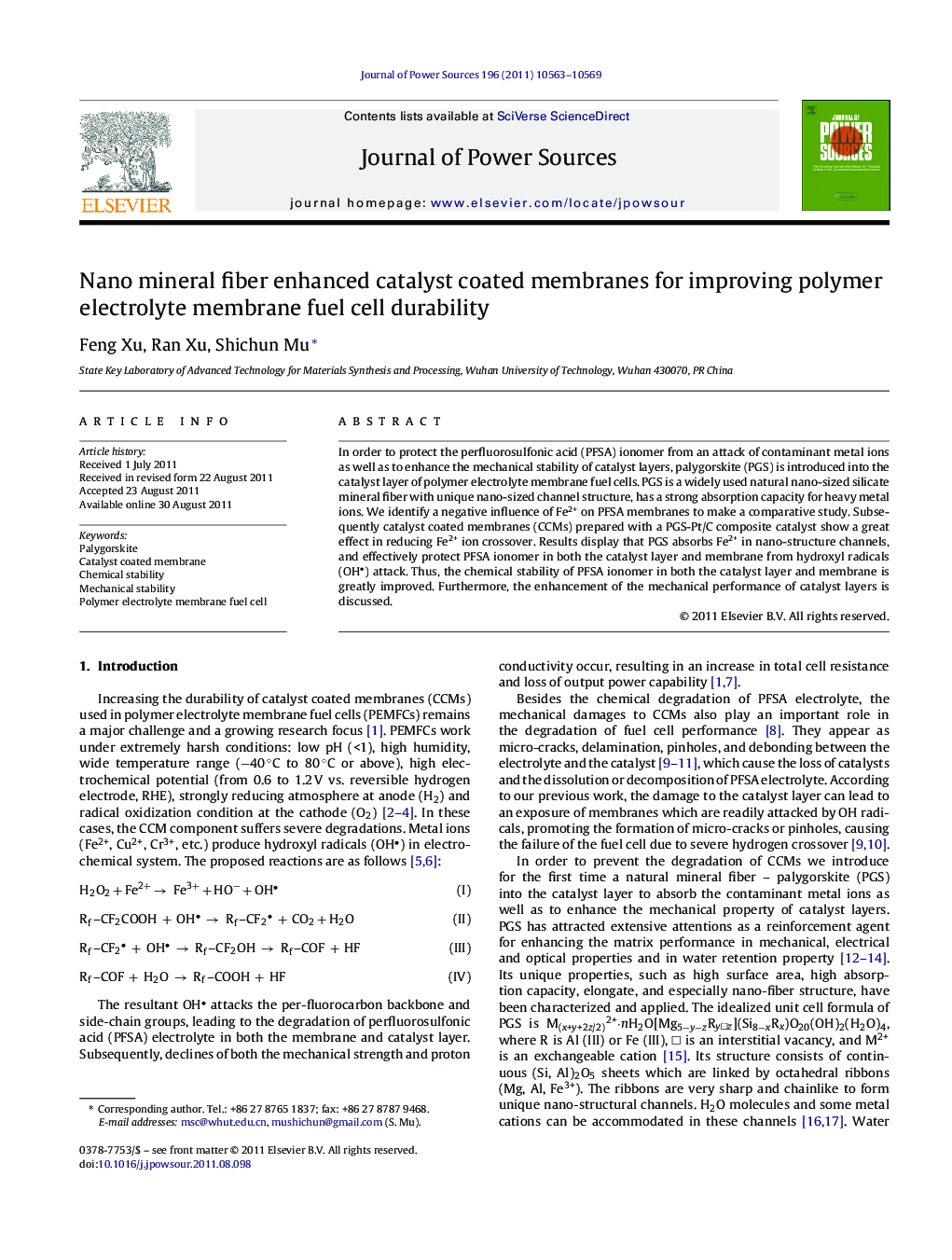| کد مقاله | کد نشریه | سال انتشار | مقاله انگلیسی | نسخه تمام متن |
|---|---|---|---|---|
| 1293247 | 973524 | 2011 | 7 صفحه PDF | دانلود رایگان |

In order to protect the perfluorosulfonic acid (PFSA) ionomer from an attack of contaminant metal ions as well as to enhance the mechanical stability of catalyst layers, palygorskite (PGS) is introduced into the catalyst layer of polymer electrolyte membrane fuel cells. PGS is a widely used natural nano-sized silicate mineral fiber with unique nano-sized channel structure, has a strong absorption capacity for heavy metal ions. We identify a negative influence of Fe2+ on PFSA membranes to make a comparative study. Subsequently catalyst coated membranes (CCMs) prepared with a PGS-Pt/C composite catalyst show a great effect in reducing Fe2+ ion crossover. Results display that PGS absorbs Fe2+ in nano-structure channels, and effectively protect PFSA ionomer in both the catalyst layer and membrane from hydroxyl radicals (OH) attack. Thus, the chemical stability of PFSA ionomer in both the catalyst layer and membrane is greatly improved. Furthermore, the enhancement of the mechanical performance of catalyst layers is discussed.
► Palygorskite (PGS) is introduced to the catalyst layer of polymer electrolyte membrane fuel cells.
► PGS as a widely used natural nano-sized silicate mineral fiber with unique nano-sized channel structure and a strong absorption capacity for heavy metal ions.
► The introduction of PGS shows a great improvement in reducing Fe2+ ion crossover and effectively protect PFSA ionomers in both the catalyst layer and membrane from OH attack.
► The mechanical enhancement of catalyst coated membranes is achieved by the reinforcing function of PGS.
Journal: Journal of Power Sources - Volume 196, Issue 24, 15 December 2011, Pages 10563–10569